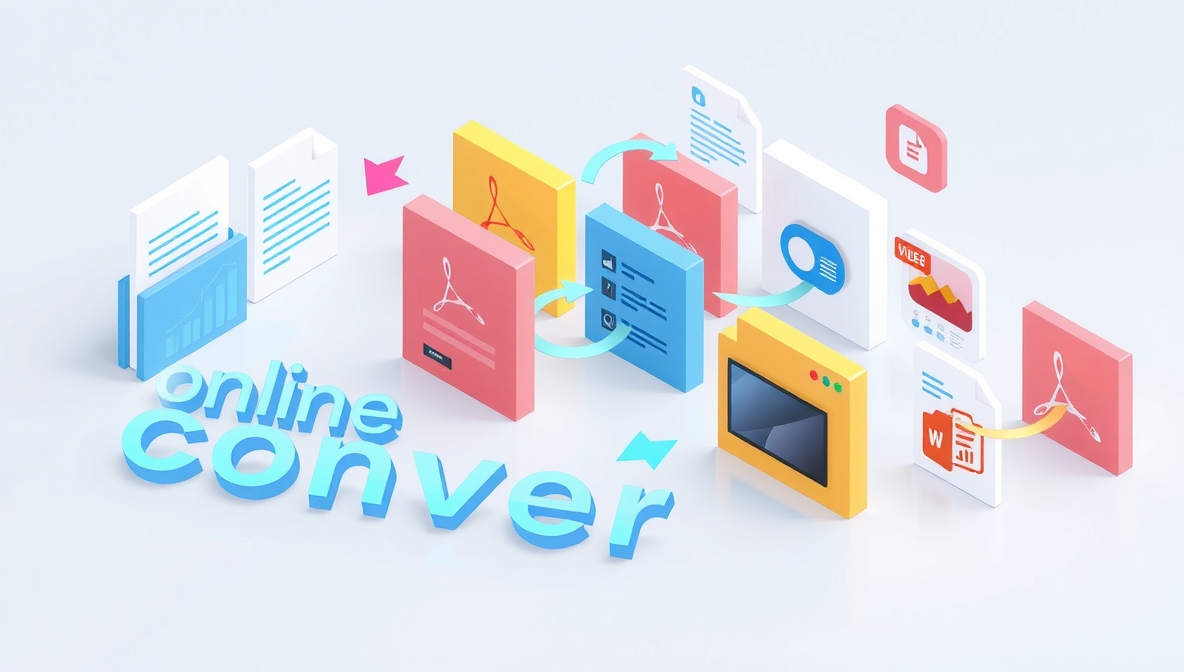The Digital Darkroom: Mastering Image Conversion for the Modern Age
In today’s visually driven digital landscape, images are the universal language of communication. From professional photographers to social media enthusiasts, the need to work with various image formats is ubiquitous. Whether you’ve captured a stunning photograph as a high-resolution JPG, designed a sleek logo with a transparent background as a PNG, or saved an animated graphic as a GIF, there will inevitably come a time when you need to convert these files into a different format. This necessity arises for reasons of compatibility, file size reduction, or specific functional requirements. Understanding how to navigate these conversions efficiently is a fundamental skill for anyone who interacts with digital content.
The challenges are numerous. A website might require PNG images for their transparency, while a printing service demands high-quality TIFF files. Sending a large batch of photos via email necessitates reducing their file size, often by converting them to a more compressed format. Without the right tools, this process can be daunting, especially for those without access to expensive, professional-grade software like Adobe Photoshop. This is where the power of specialized conversion tools becomes indispensable, offering a streamlined solution to a common digital problem.
The Essential Toolkit: Understanding Common Image Formats
Before delving into the conversion process, it is crucial to understand the strengths and primary uses of the most common image formats. The JPG (or JPEG) format is the workhorse of digital photography. It uses lossy compression to create relatively small file sizes, making it ideal for photographs and complex images with smooth color gradients. However, this compression comes at a cost: each save can degrade quality slightly, and it does not support transparency.
PNG (Portable Network Graphics) is the go-to format for graphics requiring transparency or sharp edges. It uses lossless compression, meaning image quality is preserved perfectly after editing. Icons, web graphics, and screenshots are often best saved as PNGs. The GIF format, while limited to 256 colors, remains popular for its unique ability to support simple animations, making it a staple for memes and short, looping graphics. Other formats like BMP are large and uncompressed, while TIFF is favored in professional printing for its high quality and support for layers.
Harnessing the Power of an Online Image Converter
The most accessible solution for transforming your images is an online image converter. These web-based platforms eliminate the need for complex software installations. Their primary advantage is convenience; they are available from any device with a web browser, be it a computer, tablet, or smartphone. The process is typically straightforward: you upload your source file, select your desired output format, and initiate the conversion with a single click. Within seconds, the converted file is ready for download.
This simplicity belies a powerful utility. A robust online image converter can handle a wide array of formats beyond just JPG, PNG, and GIF. Many support conversion to and from WebP (a modern format offering superior compression), SVG (for scalable vector graphics), and even PDF. Furthermore, these tools often incorporate additional features, such as the ability to resize images, adjust quality settings to control file size, or even apply basic rotations and filters. This consolidates multiple image-editing tasks into a single, user-friendly interface.
Streamlining Workflows Across Professions and Projects
The practical applications for image conversion are vast and span numerous fields. For a web developer, converting large JPGs to optimized WebP or PNG files can significantly improve a website’s loading speed, which is critical for user experience and search engine rankings. Graphic designers frequently need to convert client-supplied images into different formats to fit the specifications of various marketing materials, from digital ads to large-format prints.
Social media managers rely on these tools to ensure their content is in the correct format and aspect ratio for each platform, whether it’s a static PNG for a Twitter header or an animated GIF for an Instagram Story. Even students and academics benefit when preparing presentations or papers, needing to convert screenshots or charts into universally compatible formats. By integrating a reliable conversion tool into their workflow, individuals and teams can save valuable time and ensure professional results without technical hurdles.
Prioritizing Security and Quality in Conversion
When using any online service, especially one that handles personal or professional files, security and output quality are paramount concerns. Reputable online converter websites address security by employing secure HTTPS connections to encrypt data transfer between your browser and their servers. It is essential to review the privacy policy of the service you use; many automatically delete uploaded files from their servers after a short period, typically within an hour of conversion, to protect your data.
Regarding quality, the best converters ensure that the integrity of your image is maintained throughout the process. When converting from one lossless format to another, such as PNG to TIFF, there should be no perceptible loss in quality. For conversions involving lossy formats like JPG, a good converter will allow you to select the compression level, giving you control over the trade-off between file size and image fidelity. Always preview the converted image when possible to confirm it meets your standards before downloading.
Embracing Simplicity for a More Efficient Digital Life
In conclusion, the ability to seamlessly convert between image formats like JPG, PNG, and GIF is no longer a specialized skill but a fundamental aspect of digital literacy. The evolution of web-based tools has democratized this process, making it accessible to everyone. By understanding the purpose of each format and leveraging the convenience of a secure and efficient online converter, you can overcome compatibility issues, optimize your content for its intended use, and enhance your overall productivity. This simple yet powerful capability empowers you to focus on what truly matters: creating and sharing compelling visual content.


